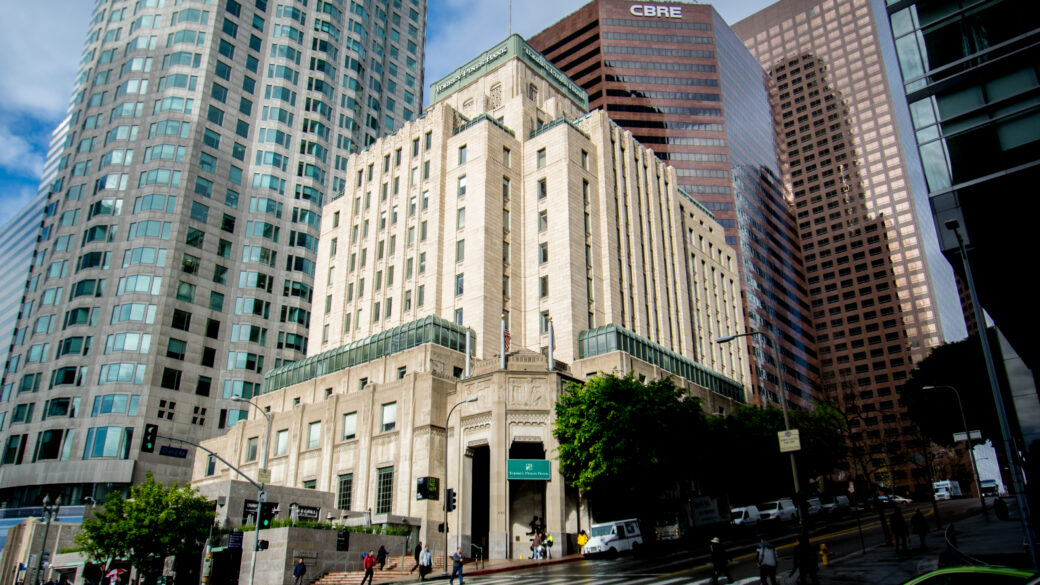The Seven Major Types of Investable Real Estate

Investors large and small soon learn there are seven major types of real estate, including residential, office, industrial-warehouse, hospitality, retail, agricultural and the remainder, catch-all category of “special.”
Urban scholars know some real estate patterns manifest again and again through history, such as the concentration of housing and services near city cores, which necessarily tends to push manufacturing and farming further out along urban perimeters. Indeed, visitors to the preserved ruins of Pompeii, circa 79 AD, will recognize “fast food” stalls along urban roads—vendors who served hot stews from cauldrons—while fields and pottery factories were located outside the denser city warrens.
The general locations of great metropolises also remain largely a constant though the ages. Even in the jet age, the huge urban areas are almost always on the ocean or on major rivers, endowed with ports and transportation hubs.
For the citizen and investor, property is timeless, and while a few great cities have declined or perished, most great metropolitan regions have persisted through millennia. Even in the New World the great cities have deep roots; for example New York City, then New Amsterdam was settled in 1642, while London was founded by Roman occupiers in 42 AD, exactly 1,600 years earlier.
Thus, well-chosen properties have been rewarding property owners and residents alike and will almost certainly do so beyond the lifespans of any present owners and even their descendants.
For investors seeking security, income and appreciation there is little that can compete with well-selected real estate. To be sure, there is risk in every venture, every business and in every property investment.
For those completely risk-averse seeking income, there are the sovereign bonds of great nations, such as Germany or the US—although returns are often low, or even below the rate of inflation.
Bonds of lesser rank, such corporate bonds graded by a credit-rating agency, can offer higher yields, but with also greater risks.
And for those seeking for large and rapid appreciation, Wall Street or the private equity markets offer a variety of opportunities, with many putative reward-profiles but also with risks—risks that include total loss (or even negative returns, for those inclined to play certain options or other derivatives markets).
So, for investors looking for the best real-world mix of security, appreciation and income, there are few asset classes, if any, can compete with properly selected real estate assets.
In recent times, the seven types of property have opened up to investors of all ranks, through convenient and low-cost platforms such as real estate investment trusts (REITs), or publicly traded real-estate companies, or crowdfunded and syndicated private equity real estate offerings. No longer is the individual investor limited to a single-family house, a small apartment building, or a stretch of ranch land.
There is another excellent reason to invest in property: While true geniuses, such as a Steve Jobs or Elon Musk might rarely create a tech empire, many great real estate fortunes have been built through diligent and sustained effort by steady, dedicated investors.
So, it behooves the investing public to know a little more about each property class.
Historically speaking, office districts are a relatively new phenomenon, postdating agriculture, industrial, retail and residential uses, for example.
Today, of course, downtown high-rise central business districts are iconic of modern commerce, in the US and globally. Property investors, particularly institutional, have seized the skyrises, which can command desirable credit-worthy blue-chip and other high-end tenants.
Interestingly, the concept of the modern office district was jump-started after the Great Chicago Fire of 1871 leveled much of the city. Newer buildings were built better, higher and to code, and one tower begat another, so soon the office district was born.
There are many ways to slice every property sector, but in general modern office buildings are thought of terms of central business district vs. suburban, and then also class A, B, or C.
In more recent years, such sub-categories as “mixed-use”—usually including ground-floor retail, and “creative” and “shared-space” office types have emerged.
Creative office buildings are often re-purposed warehouses, or other older structures, and shared-space office buildings often include a broader mix of “curated” retail and service tenants, in an attempt to create a more-desirable building habitat for all tenants.
In terms of class, as one might expect, class A refers to premier office properties in the best locations, featuring highest-quality construction, fit and finish standards, and best technologies and building amenities. Institutional investors often buy such large structures as part of their “core” portfolios.
Class B offices, generally speaking, are outside premier central business districts, or may be older properties. For investors, class B properties can be attractive for the price point, but also because some older buildings have architectural charm, and with upgrades and amenitizing, can regain admittance to the class A strata, and the higher rents attached thereto.
Class C offices are generally useful, but work-a-day structures outside better central business district or prime suburban submarket locations, and often inhabited by smaller accounting or law firms, public-relations shops and the like.
Perhaps the second-oldest kind of real estate after agricultural, residential is still largely an owner-user or smaller-investor market, though in recent decades even single-family detached homes, and certainly the multifamily building or apartment sector, have become increasingly popular among institutional investors.
Just as with office buildings, investors have sliced and diced the multifamily or apartment sector, in this case into three large categories, denoted as high-rise, mid-rise and garden.
In apartment-land, high-rise refers to 10-story structures and above, which are usually upper-class bastions from the get-go, due to the cost of construction. Once buildings get above five stories generally steel construction rather than wood becomes the norm, along with other attendant higher embedded costs such as elevators and larger stairwells, and even commodious underground parking garages.
The mid-rise apartments generally fall between five and nine floors, and have elevators, but often still resort to parking lots to accommodate vehicles, if built in suburban locations.
And garden apartments are the workhorses of the industry, usually two- and three-story buildings without elevators, found in both suburban and urban locations.
As with office markets, in recent years there has been more fluidity in multifamily markets, with the conversion of warehouses or even old office buildings into living quarters becoming common. The clever re-purposing of an inexpensive dowdy office building or warehouse into residential has proven profitable if handled skillfully.
In more cities, the “mixed-use” property type is being encouraged, which generally features ground-floor retail uses, with housing atop, though sometimes middle layers of offices or hotel suites are included.
In addition, in latter years many shopping malls have been prospected for at least partial conversion to housing.
From the perspective of institutional investing, one large change in recent years has been the heavy flux of large-scale buyers into the single-family detached home market.
Such institutional investors as Tricon Residential, American Homes 4 Rent, and Brookfield Asset Management have moved into buying thousands of single-family detached homes for income and appreciation potentials.
The granddaddy and biggest player in the single-family detached home market is the Invitation Homes, a Big Board-listed real estate investment Trust (REIT) which owns more than 80,000 houses and adds quarterly to its portfolio.
The apparition of colossal buyers in the single-family home markets in the new millennium has raised some concerns, but for individual investors, or those participating in residential crowdfunding or syndications, there is a degree of confirmation when the large institutional investors are also in the game.
If Wall Street, with its vast tribe of analysts and bean-counters thinks housing is a smart investment, then that is probably as good a bet as any.
Of course, even before venturing into single-family homes, Wall Street, syndicators and institutional investors were deep into multifamily investments. Large multifamily investors, such as the publicly held REIT and Tennessee-based MAA, can own more 100,000 apartments, and are also accumulating portfolio properties with each passing year.
There are yet other subcategories of housing, including condominiums and their cousins, the co-ops, and planned communities (especially for senior citizens), and even manufactured homes.
In the US, the overarching story on housing is that due to property zoning and other restrictions, new supply has long been curtailed, especially since the Global Financial Crisis of 2008.
This trend towards housing shortages is global, and seems to inevitably result from increasing urbanization, and the attendant nature of homeowners and other groups to seek greater control over neighborhood development—and not the least, to limit new competition.
In such environments, even manufactured housing developments, once considered somewhat déclassé, have become an investable option in the 2000s. The quality of manufactured homes has risen in recent decades, and, moreover, while usually the residents of manufactured homes do not own the land—they rent a parcel—they do own their fabricated house, and thus tend to be a cut above ordinary apartment renters.
Manufactured homes is a deceptively large market, housing 22 million US residents. Some experts regard manufactured housing as an evergreen market, doing well in good times, but also faring well enough in bad times as homeowners gravitate to more-economical options. Moreover, America’s rapidly growing senior population is comfortable in the mobile-home parks.
Thus housing, one of the oldest types of property investments, has been renewed in the 21st century, though it truly never fell out of style. As long as people need shelter, there will be a market for housing.
Once a plebeian property class, and often an after-thought among investors, in recent decades the warehouse-industrial sector has become a hot ticket due to globalization and the shipping needs of present-day urban megalopolises.
The earliest warehouses were but granaries, kept near or on farmlands, or alongside houses and taverns in villages.
Modern-era warehousing began with European transoceanic shipping from the 15th through the 19th centuries, which soon required storerooms along ports to hold goods for payment, or until inland transportation could be arranged. Ship berths were best used to quickly load or unload cargo, meaning nearby warehouses were a must.
Canals and railroads followed, along with growing city populations. The age of mass manufacturing in the 1900s, giving rise to entire warehouse districts near any urban conglomeration.
The advent of the internet and online consumer purchasing in recent years, as well as increasingly sophisticated manufacturing supply chains, has resulted in such tech-wonders as automated warehouses with ceiling heights above 15 meters, at least 12 meters between spans, and climate control.
The term “logistics” has come to define large parts of the warehouse scene, and the need for advanced warehouse designs with goods traced through bar codes or even embedded tracking devices.
As with other property sectors, investors have created classes of warehouses, from A+, A, B+, B, C and D.
As might be suspected, A+ are newest and largest warehouses, on single floors with high ceilings, and latest technology to move and track goods. Large warehouses are also prized among investors for generally being leased to long-term and stable tenants.
Interestingly, in recent times even the lower grades of warehouses have had a renaissance of investor demand.
Some industry denizens advise that older warehouses be avoided, since e-commerce or other retailers are gravitating towards sophisticated robotic systems embedded on very large footprints, typically above 400,000 square feet, and even topping 1 million square feet for some owners, such as WalMart. Amazon’s biggest warehouse is in Tennessee and has 3.6 million square feet.
But many older and smaller warehouses are “close in” to urban areas, and with some upgrading are becoming useful for the “last mile” of delivery. Additionally, warehouses in many regions are being converted into creative office space or even “artist loft” living quarters.
As has proven the case for centuries, for investors willing to adapt property to evolving commercial and urban landscapes, there are interesting prospects in real estate, including warehouses.
For as long as man has traveled, there has been a need for temporary housing, first provided along the trade routes or near religious sanctuaries of yesteryear, and still a vibrant market today in every major city.
Through cataclysmic ups and downs, hotels have proven to be no fly-by-night industry: The Nishiyama Onsen Keiunkan, a Japanese resort not far from Mount Fuji, has been in business since the year 705, and is considered the oldest operating hotel in the world.
Today investors tend to classify hotels as luxury or full-service, limited service, flagged vs. unflagged (that is, part of a name-brand chain or not), boutique (generally, a higher-end or unique facility) or extended stay (usually for business travelers on assignment).
In addition, resort-, destination- or casino-hotels are included in this category by some investors.
For most, owning an entire hotel is likely too big a bite to chew, but other options include REITs, and syndications, especially of the crowdfunded variety.
As with many other types of real estate today, syndicated hotel deals often feature a single property and a value-adding strategy, with an exit planned in five years. Thus, the sponsors might acquire an older hotel, renovate, and reposition the facility to boost operating income—often through a snazzy restaurant and bar scene—and then sell at a good profit while generating reasonable annual income for the limited partners.
Not surprisingly, hotels tend to thrive in strong economies, and struggle in recessions, dependent as they are on business travelers and consumers with discretionary income. Investors may wish to time their purchases of hotel properties with economic downturns.
That said, the great hotels and modern-era hotel chains have survived through decades of thick and thin, and as global real incomes rise, so does travel and the need for lodging. New technologies may facilitate virtual meetings, but vacations and real business meetings will never go out of style.
As with many of the other property types, it was the emergence of great cities and the attendant specialization of crafts-workers and concentrations of people that led to retail-specific property types.
The earliest retail “properties” were likely food vendors along roadsides, and weekly bazaars at an agreed upon plot of land not far from villagers, where goods could be bartered.
Interestingly enough, the first US shopping mall was not in a Chicago or New York City but was the Country Club Plaza on the outskirt of Kansas City, Mo., opened in 1922. Larger mega-malls became common in the US in the 1980s, and of course, many behemoth shopping-emporiums have struggled in the new millennium with the rapid growth of online shopping.
In addition to malls, the retail category includes strip malls, also sometimes dubbed “mini-malls,” those being smaller clusters of retailers usually on one, or possibly two floors. Of course, the ordinary “main street”-type storefronts are part of the retail scene, common the world over.
Like other property types, in recent decades investors have been innovating and blending more uses with retail properties, the mixed-use format is now common, featuring ground-floor retail, and offices and then housing above.
And like other properties, retail locations can be re-purposed and converted into housing or other uses, especially if purchased in a down market.
Some investors specialize in upgrading retail properties, as in converting aging goods-selling shops into higher-end restaurant-bars, or other consumer services, such as veterinarians, salon-operators, or dentists.
Like other commercial properties, retail tenants tend to stay longer than residential tenants, and are more-stable in paying rents.
While some smaller retail locations might be suitable for individual investors who seek a hands-on management option, participation with experienced owner-operators through a retail-property syndication might make more sense for most.
As with so many other property types, in retail the race may not go to the swift, but the adaptable.
Farmland and ranch lands are the oldest type of real estate, and since people have never stopped eating, such investments have never really gone out of style either.
There are more than 900 million acres of farmland in the US, roughly three-fifths held by owner-operators, and the rest by landlords who usually rent out fields.
The prospect of owning land to rent is one that can appeal to investors who do not have the inclination or time to be owner-operators.
Other investors will find farm crowdfunders and syndicators able to connect them to a market that has endured through the ages.
There are long track records on US farmlands, and indicate about 6% annual appreciation in property values over recent decades, while generating income along the way.
While every industry has ups and down, in general farmland offers stable values due to the steady demand for product. For income and security, farmland is hard to top.
In general, investors cluster five other property types under the catch-all special category, including theatre, parking, religious, recreational, and medical facilities.
Occasionally the commerce or customs of man yield up a new property type that does not quite fit into the broad categories generally in use, and so it is with data centers.
Not quite warehousing, not quite manufacturing, but not really offices either, data centers have become a popular investment, in particular for private equity investors, and certain REITS.
With the ubiquity of the internet demanding ever-more powerful processing equipment, the globe’s computing infrastructure has shifted from traditional on-site processors to huge data centers and virtual networks that serve hundreds of customers through the cloud.
There are still-yet other specialty property investments, such as telecom towers, and there are sure to be more in the future as the needs of commerce evolve.
As real estate historians know, the business of owning and managing property is one of the oldest commercial endeavors of man, reaching back into antiquity and founding of the first cities. The broad types of property, such as agricultural, residential, retailing, or warehousing, evolved as metropolises expanded and commerce demanded special property types.
Many industries will come and go, and many commercial enterprises will eventually flounder, going the way of Polaroid cameras, typewriters, or the telephone booth.
But wherever businesses thrive and people congregate, there will be a demand for real estate. Well-chosen property investments have proven again and again to stand the test of time, while generating income along the way.










 Podcast
Podcast